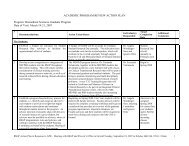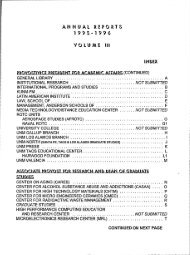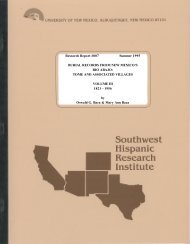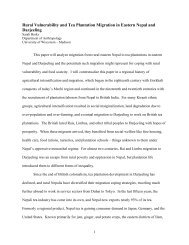i Jeffrey L. Engbers Health Exercise and Sports Science This ...
i Jeffrey L. Engbers Health Exercise and Sports Science This ...
i Jeffrey L. Engbers Health Exercise and Sports Science This ...
You also want an ePaper? Increase the reach of your titles
YUMPU automatically turns print PDFs into web optimized ePapers that Google loves.
Division III, nine men’s sports <strong>and</strong> nine women’s sports are included (National<br />
Association of Collegiate Directors of Athletics, n.d.a). A study of Division III ADs in<br />
the South revealed that the competitive success of the University’s athletic teams was<br />
extremely important to some ADs but others considered other aspects as very important<br />
(McGehee, 2010). Since the Learfield <strong>Sports</strong> Directors’ Cup st<strong>and</strong>ings can be used to<br />
compare institutions across a national level, this national comparison of Division III<br />
institutions was used to discover if challenges are different among those institutions that<br />
are competitive at the national level <strong>and</strong> those that are not competitive at the national<br />
level.<br />
Financial management at Division III institutions is different from other divisions.<br />
Athletic budgets at the Division III level are included in the institutional budget, like<br />
other programs on campus (Wesibrod, Asch & Balloou, 2008). <strong>This</strong> frees Division III<br />
administrators from heavy fundraising dem<strong>and</strong>s or a “fill the arena mentality” (N. Meyer,<br />
personal communication, June 2, 2010). Division I institutions tend to follow a corporate<br />
model, perceiving revenue production <strong>and</strong> competitive success as more important than<br />
such factors are to ADs in Division III (Patrick, Mahony, & Petrosko, 2008). In addition<br />
to spending less money on athletics, Division III institutions distributed money more<br />
evenly across all sports than Division I institutions (Patrick et. al., 2008).<br />
Division IA schools spend almost ten times the amount on teams as Ivy League<br />
schools do, <strong>and</strong> Ivy League schools spend three times as much per team as Division III<br />
schools (Shulman & Bowen, 2001). Even though Division III institutions typically do not<br />
include facilities <strong>and</strong> some other areas in the average amount of money spent on athletics,<br />
which may be calculated in Division I budgets, the money spent at the Division III level<br />
34
















